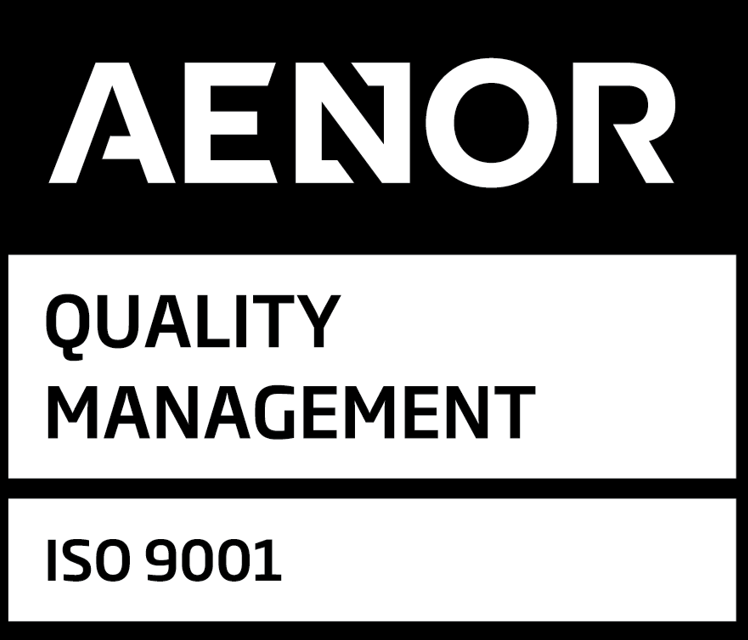The IVDR Shift and What It Means for Clinical Laboratories
The in Vitro Diagnostic Regulation (IVDR) (EU) 2017/746 came into force on 26 May 2022, representing a paradigm shift for diagnostic testing in Europe. Its purpose is clear: ensure safety, traceability, and performance of all in vitro diagnostic devices (IVDs). Unlike its predecessor, the IVDD (98/79/EC), the IVDR applies far-reaching obligations not only to manufacturers but also to clinical laboratories that develop and use their own in-house IVDs (IH-IVDs).
A cornerstone of this new landscape is Article 5(5), which sets conditions under which health institutions may continue manufacturing and using in-house devices without CE marking. While this exemption acknowledges the clinical need for tailored diagnostics, it also imposes new responsibilities.
This blog provides a step-by-step readiness checklist for laboratories to guide you through the transition.
Step 1: Do You Know What Counts as an In-House IVD?
What exactly is an in-house IVD under the IVDR?
An in-house IVD (sometimes called a laboratory-developed test or LDT) is any in vitro diagnostic device manufactured and used only within a health institution, not supplied to another legal entity, and not manufactured on an industrial scale
Examples include:
- PCR assays where the lab develops its own probes.
- Custom-developed software tools for diagnostic interpretation.
Excluded are:
- General laboratory supplies.
- RUO (research use only) products – unless repurposed for diagnostic use. If an RUO product is used for diagnostic purposes (i.e., results are communicated to the patient for medical decision-making), it ceases to be RUO and must comply with IVDR Article 5(5), thereby becoming subject to the same obligations as an in-house IVD/LDT.
- Commercially available CE-marked IVDs (which must be purchased and used as intended) – unless it is modified, combined or used outside it’s intended purpose.
Takeaway:
You must determine whether you are using an in-house IVD. If you are modifying, combining, or using CE-marked diagnostic tests outside their intended purpose, or if you are repurposing RUO products for diagnostic use, you must ensure compliance with Article 5(5).
Step 2: Is Your Laboratory Recognized as a Health Institution?
Who is entitled to the Article 5(5) exemption?
Only health institutions may use in-house IVDs. According to the IVDR, a health institution is an organization whose primary purpose is patient care or public health. This includes:
- Hospitals
- Clinical laboratories
- Public health institutes
Importantly, the recognition of health institutions may depend on national legislation. For instance, some countries require formal registration or accreditation to benefit from Article 5(5).
Takeaway:
Always check your national laws to confirm whether your laboratory qualifies as a “health institution” and whether additional national restrictions or obligations apply.
Step 3: CE-Marked or In-House? Make a Strategic Choice
Should your lab buy CE-marked tests or continue with in-house ones?
Under IVDR, labs face a strategic decision:
- Purchase CE-marked IVDs: These carry regulatory assurance but may not always exist for niche diagnostic needs, and market withdrawals could limit supply.
- Develop and use in-house IVDs: Allowed under Article 5(5) if your lab demonstrates compliance with conditions (e.g., GSPR, QMS, technical documentation).
From 31 December 2030, labs must justify why an equivalent CE-marked device is not suitable if they want to continue using their in-house test (article 5(5)(g))
Takeaway:
Begin analyzing your portfolio now. Which tests could be replaced by CE-IVDs, and which must remain in-house due to clinical need?
Step 4: Do You Comply with General Safety and Performance Requirements (GSPR)?
What technical documentation requirements already apply?
Since 26 May 2022, all in-house devices must comply with Annex I of the IVDR (GSPR). This includes:
- Risk management system covering patient, user, and use error risks.
- Performance evaluation based on scientific validity, analytical performance, and clinical performance.
- Traceability and identification (lot numbers, production dates).
- Appropriate instructions for use and safety information
Takeaway:
Treat your in-house tests with the same rigor as CE-marked devices. Maintain documentation to always prove compliance with the GSPRs.
Step 5: Have You Implemented an Appropriate QMS?
What does IVDR require for quality management when operating under article 5.5?
Since 26 May 2024, labs must manufacture and use in-house devices under an appropriate Quality Management System (QMS). For in-house IVDs, this generally means compliance with EN ISO 15189 or equivalent national provisions
However, note:
- ISO 15189 covers quality in medical laboratories but not necessarily manufacturing processes.
- Therefore, supplement with elements of ISO 13485 for design and production control.
- In addition, laboratories must address the QMS requirements described in Article 10(8) IVDR, which outline the minimal aspects of a system covering risk management, manufacturing documentation, monitoring, corrective actions, and communication with authorities.
Takeaway:
Expand your QMS to cover risk management, manufacturing documentation, monitoring, and corrective actions, and the additional QMS obligations set out in Article 10 IVDR. Note that ISO 15189 alone is not sufficient; relevant elements of design and manufacturing from ISO 13485 must also be considered, as the IVDR introduces further QMS requirements that must be fulfilled.
Step 6: Can You Provide a Public Declaration?
Do labs need to publish information about their in-house devices?
Article 5(5)(f) IVDR requires health institutions to draw up and make publicly available a declaration for each in-house device. This obligation has applied since 26 May 2024, following the end of the initial transition period.
What must the declaration contain? At minimum:
- Name and address of the health institution manufacturing the device.
- Details necessary to identify the device (e.g., designation, type, internal code).
- A declaration of compliance with Annex I (GSPR), or where full compliance is not possible, a reasoned justification explaining the deviations.
- Confirmation that the device is manufactured under an appropriate QMS.
This declaration must be kept up to date and made easily accessible, typically via the laboratory or hospital’s website This transparency ensures accountability and facilitates oversight.
Takeaway:
Prepare standardized declarations for each in-house device. A practical tool exists: the IVDR Taskforce Guidance on LDTs (2020) provides a template (Appendix B) for the declaration that can be directly adapted by laboratories.
Step 7: Are You Ready for Competent Authority Oversight?
What role do regulators play?
Competent authorities may request documentation or even audit your lab to verify compliance. Labs must be prepared to show:
- Design, manufacturing, and performance documentation of their in-house devices.
- Clinical justification for developing or using the test instead of a CE-marked alternative.
- Ongoing performance review and vigilance records, including corrective actions and monitoring of clinical use.
- Evidence of an appropriate Quality Management System (QMS), as required since 26 May 2024.
The degree of oversight varies across Member States. For example, Belgium and Ireland already operate registration portals where laboratories must register their in-house tests. In other countries, legislation is still under development (Spain) or practices remain vague.
Takeaway:
Anticipate audits. Keep a compliance file for each in-house IVD.
Step 8: How Will You Justify Non-Equivalence? (2030 Requirement)
What happens in 2030?
From 31 December 2030, labs must justify why the specific needs of their target patient group cannot be met by a CE-marked device – Article 5(5)(g).
This justification may be based on:
- Technical aspects (e.g., higher sensitivity).
- Biological aspects (e.g., pediatric vs adult reference ranges).
- Clinical needs (e.g., unmet diagnostic gaps).
Takeaway:
Start now by mapping your portfolio and identifying tests likely to face challenges in proving non-equivalence.
Step 9: Do You Have the Resources?
Why are many labs struggling?
Challenges highlighted in recent analyses include:
- Lack of dedicated regulatory staff.
- Limited time and budget for documentation.
- Unfamiliarity with regulatory terminology.
Takeaway:
Seek structured support, whether through consultants, digital tools, or peer networks, to avoid non-compliance.
Step 10: Checklist. Is Your Lab Ready?
Step 1: Perform a GAP Assessment
- Map your current situation: List all in-house IVDs and how they are used in your lab.
- Check national status: Verify if your institution qualifies as a “health institution” under national law, and review whether national legislation imposes additional obligations such as mandatory QMS accreditation (e.g., ISO 15189), registration of in-house IVDs with competent authorities, or other reporting requirements that go beyond the IVDR.
- Compare requirements vs. practice: Review the IVDR Article 5(5) obligations and identify where your lab already complies (e.g., risk management, traceability) and where gaps exist (e.g., QMS documentation, technical documentation).
- Prioritize risks: Highlight critical areas (such as missing QMS procedures or incomplete Annex I documentation) that could block compliance in an inspection.
Step 2 – Take Action to Close the Gaps
- Strategic choice: Decide whether to replace tests with CE-IVDs or maintain in-house versions. Document the rationale.
- Annex I (GSPR): Ensure all in-house IVDs comply with General Safety and Performance Requirements (effective since 26 May 2022).
- Quality Management System: Implement or update your QMS to align with ISO 15189, supplemented with elements from ISO 13485 and Article 10(8) IVDR.
- Compliance documentation & oversight readiness: Compile and maintain a compliance file for each in-house IVD, including full technical documentation (design, manufacturing, risk management, and performance evaluation). Ensure these files are audit-read and can be provided upon request by competent authorities.
- Vigilance & corrective actions: Set up procedures for monitoring performance, handling incidents, and implementing corrective/preventive measures.
- Public declaration: Draft and publish a declaration for each in-house device (mandatory since 26 May 2024). Use available templates from guidance.
- 2030 justification: Start documenting why no equivalent CE-IVD meets the needs of your patient population to support continued in-house use after 31 December 2030.
Closing Thoughts
The IVDR sets high expectations for laboratory-developed in-house IVDs, transforming informal diagnostic practices into rigorously controlled processes. While compliance requires effort, resources, and cultural change, it also strengthens quality, safety, and patient trust. For laboratories, the transition is not optional, it is an opportunity to embed regulatory excellence into daily operations and secure the future of innovative diagnostics. Are you ready for the IVDR transition? Start today with a gap analysis, QMS reinforcement, and documentation plan. The earlier you act, the smoother your path to compliance will be.
At MDx CRO, we specialize in helping clinical laboratories navigate the IVDR, from gap assessments to QMS implementation and technical documentation. We support laboratories in demonstrating compliance with Article 5(5) for in-house IVDs by assisting with:
- Gap assessments: Mapping all in-house IVDs, comparing current practice with IVDR Article 5(5) requirements, and identifying compliance gaps.
- QMS alignment: Extending ISO 15189-based systems with manufacturing and design elements from ISO 13485, plus additional QMS obligations under IVDR.
- Technical documentation: Preparing complete compliance files per device.
- Public declarations: Drafting and publishing Article 5(5)(f) declarations using recognized templates, ensuring accessibility and consistency.
- Regulatory readiness: Preparing for competent authority oversight, including audits and requests for documentation.
- Strategic portfolio decisions: Advising whether to replace tests with CE-IVDs or justify continued in-house use, including preparing 2030 equivalence justifications.
- Vigilance systems: Setting up monitoring, incident reporting, and corrective/preventive actions in line with IVDR obligations.
Our team knows the pitfalls and the solutions. Let us support you in achieving full compliance. Contact us today to discuss how we can help.






